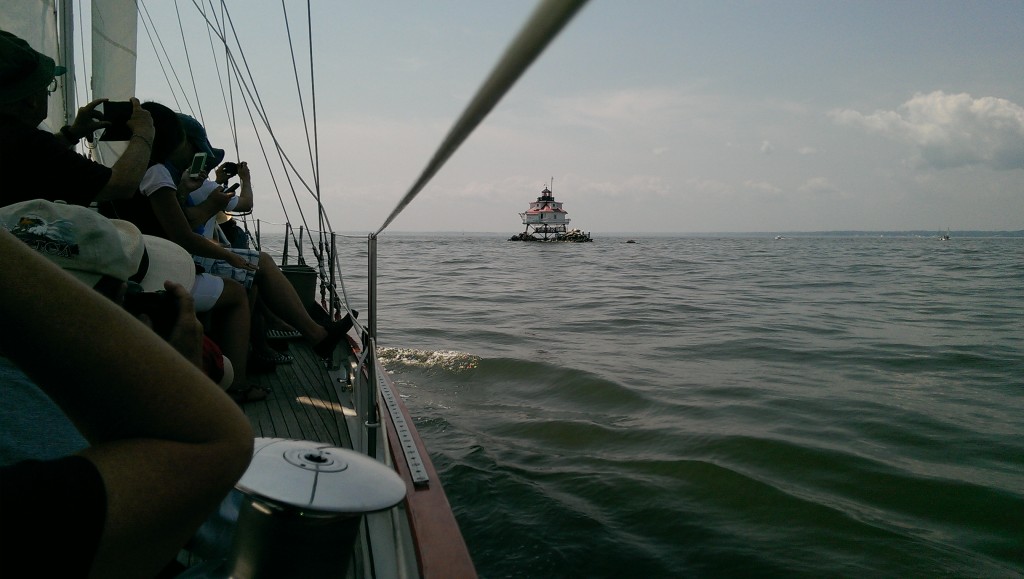
A beautiful day for a cruise to see lighthouses. As for the wind, it was light too. We tried to do as much sailing as we could, and managed to sail about 1/3 of the time. The other time was spent motoring (and making a nice breeze over the boat) as we headed to see Thomas Point Lighthouse and Bloody Point. We learned some great things along the way, here’s a small summary. Did you know?
- Thomas Point Lighthouse was built in 1875 and manned until 1986.
- A different Thomas Point Lighthouse was originally on land in the early 1800s, but the water kept getting closer and closer to it’s shores, they needed to move it into the water.
- Greenbury Point Lighthouse was first erected on Greenbury Point (where the 3 Naval towers are located), but then also moved into the water in the late 1800s. Greenbury Point Light only lasted for about 40 years, and then just the platform was left until about 6 years ago. It used to be affectionately called “the Spider Marker” because of it’s look.
- Bloody Point Lighthouse: Finished construction in 1882. Caisson style lighthouse.
- More about Bloody Point Lighthouse: The Board definitely favored caissons at this time, having learned that screwpile lighthouses could sometimes become dislodged from their foundations and float away with sheets of heavy ice. The caisson at Bloody Point was not invulnerable to environmental damage, however. Severe storms during the winter of 1883 struck the lighthouse, “scouring the sand from under the northwest side of the light-house and causing a settling of the structure toward that direction.” Bloody Point was found to be leaning five feet from perpendicular at its lantern room, and riprap stone was hastily put down around the affected northwest corner. This solution was inadequate, though, as that stone was either carried away by storms or so heavy that it sank into the soft mud of the Chesapeake.In November 1884, the Board tried a more drastic means of eliminating the lighthouse’s tilt. Sand was dredged out from beneath the side opposite the list, successfully reducing the inclination by half, and heavy brush mattresses were placed all around the lighthouse and weighted down with small stones. In the spring of 1885, the seabed around the lighthouse was further secured by 760 tons of larger stones, which were used to form a ‘scour apron.’ This technique has kept the lighthouse aligned within two degrees of vertical to this day, and the scour apron is visible at low tide.
Thank you Meg for all of the wonderful details of the history of Lighthouses on the bay. And all the other history that you told us as well.
